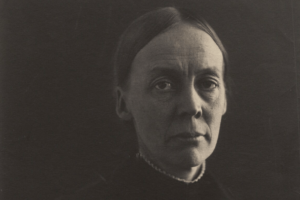“You don’t want to mess with Mrs. Sidgwick!”. No Victorian has ever written a statement like this, though it is certainly along the lines of what many contemporaries of Eleanor Mildred Sidgwick were thinking.

Born on 11 March 1845 into one of the most politically and intellectually influential families in Britain, Nora (as she was called by her friends and family) was one of the most brilliant and hardnosed intellectuals of her age. One of her brothers was the future Prime Minister Arthur Balfour, another was the biologist Francis Maitland Balfour, whose early and tragic death was lamented as a severe loss to British science by the likes of Darwin and Thomas H. Huxley.
But Nora was not exactly a scientific lightweight herself. Impossible to pigeonhole in terms and categories of our present time, she was a rigorous investigator of controversial psychological phenomena from the 1870s, a gifted mathematician and co-worker of a future physics Nobel Laureate in the 1880s, a Principal of Newnham College in Cambridge from 1892, and in 1915 she was elected President of the Educational Science Section of the British Association.
Long before women were permitted to take degrees at Cambridge University, she was an indispensable collaborator of Lord Rayleigh in the famous Cavendish Laboratory. In the mid-1880s, her calculations helped Rayleigh re-specify the Ohm, the Ampere and the Volt, and the results established modern standards for commercial electrical units.
Even less widely known is the fact that Nora represented British psychologists at the early International Congresses of Experimental Psychology.
With her husband, the Cambridge philosopher and founding president of the Society for Psychical Research (SPR) Henry, Nora and other SPR members in fact collaborated with the ‘father’ of the American psychological profession, William James, in an international study of veridical or ‘telepathic’ hallucinations. Moreover, she presented papers on experiments in telepathy at the second session of the International Congress of Experimental Psychology at University College London in 1892, and on hallucinations in mentally ‘healthy’ persons at the third session in Munich in 1896.
Source: Sommers, A. (2020, March 11). Women at the Margins: Eleanor Mildred Sidgwick (1845-1936). Retrieved from https://www.forbiddenhistories.com/nora-sidgwick/.